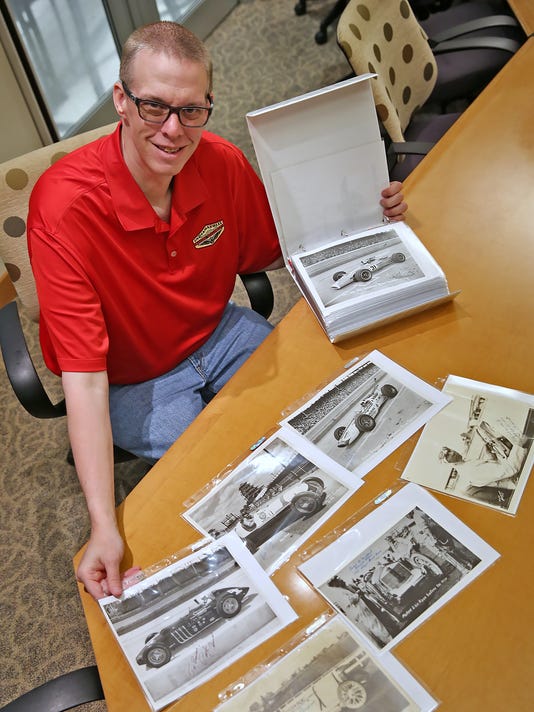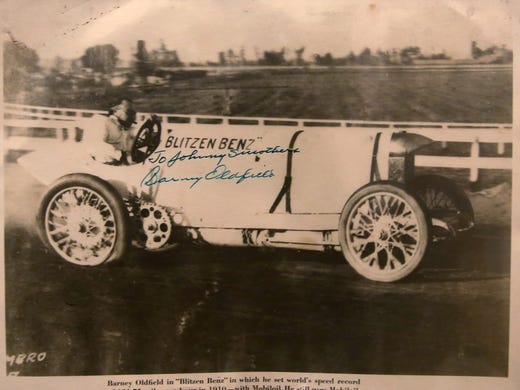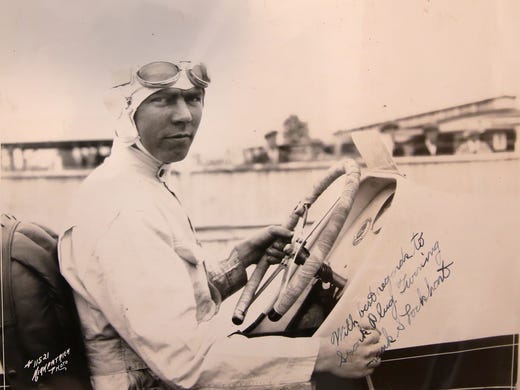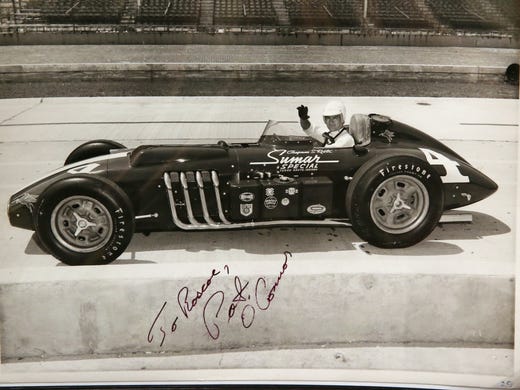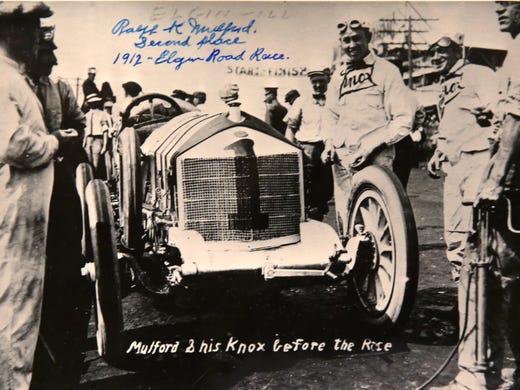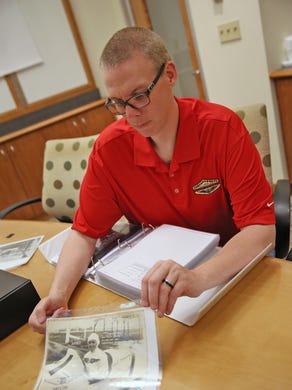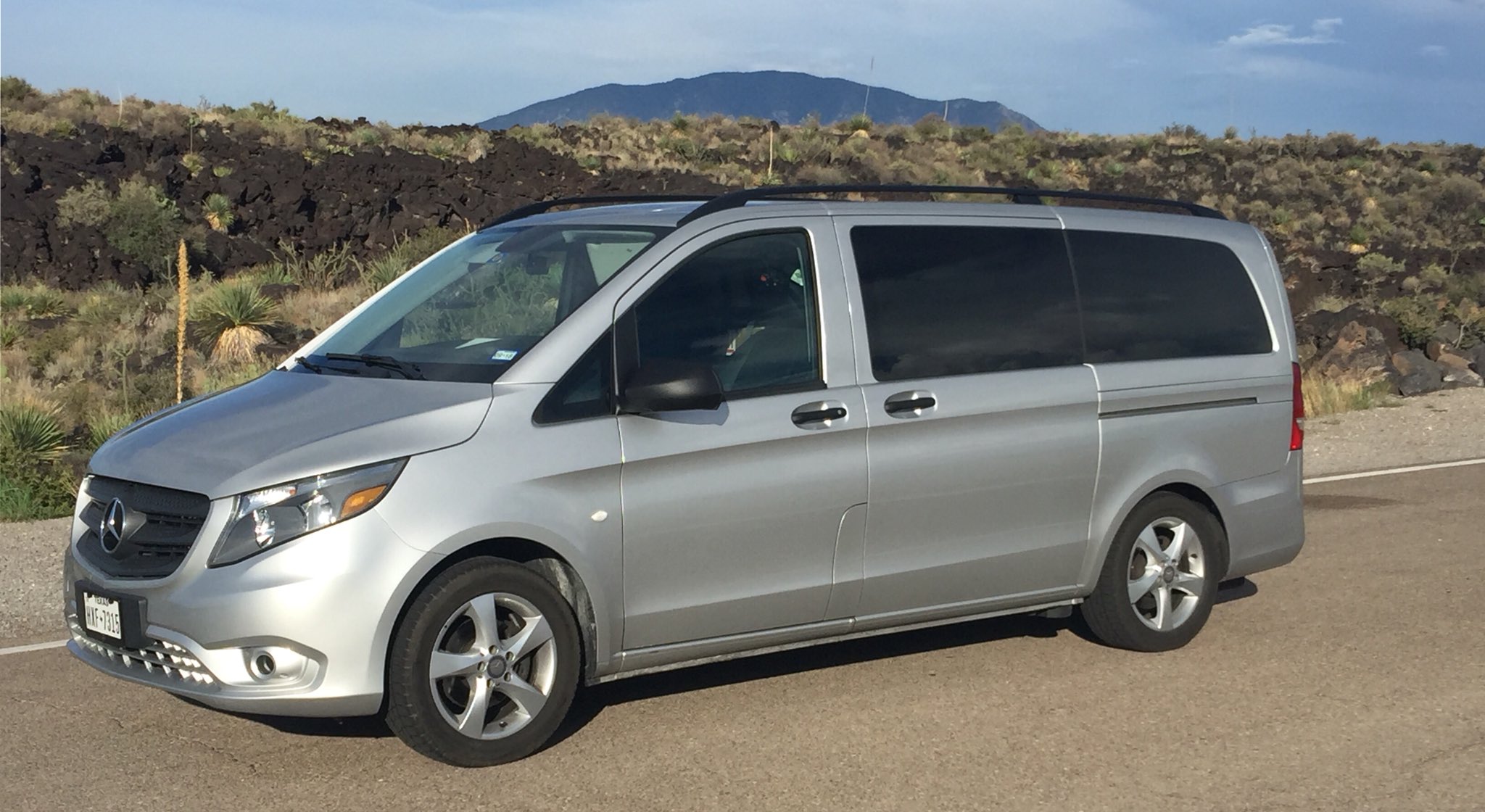[Editor’s note: Burt Reynolds, perhaps best known for his role as Bo “Bandit” Darville in 1977’s Smokey and the Bandit, died on Thursday, September 6, at age 82. The cause of death was an apparent heart attack. We thought a fitting way to remember Reynolds would be to republish Tom DeMauro’s detailed 2016 interview with the star, which first appeared in the
Had Burt Reynolds’ life adhered to his plan, he would never have starred in popular car movies like White Lightning, Smokey and the Bandit I and II, Hooper, The Cannonball Run and the rest. Nor would he have amassed hundreds of other movie, stage, and TV credits, been the top box office draw from the mid-1970s into the early 1980s, a Golden Globe and Emmy winner or an Oscar nominee. That’s because young Burt, then known as “Buddy,” had his eye on a pro-football career.
Burt was born in Lansing, Michigan, in 1936, but raised in Palm Beach County, Florida; his father, “Big Burt” Reynolds, was an authoritarian and the local police chief. His mother, Fern, a former nurse, doted on Burt and his sister, Nancy Ann, who was six years his senior.
He was a strong-willed child, who by his own admission courted trouble. By the early 1950s, however, Burt had channeled his energies into football. After making First Team All State and earning an All Southern Honorable Mention in high school, he fielded various college offers. He ultimately accepted a scholarship to Florida State University (FSU) in 1954, and played halfback for the Seminoles.
According to Burt’s recent memoir, But Enough About Me, an on-field knee injury in his sophomore year that required surgery, followed by further damage sustained in a life-threatening car accident some time later, conspired to end his football career, and his time at FSU. At Palm Beach Junior College, an English professor, whom Burt would soon view as his mentor, convinced him to act in a play he was producing. Acting became Burt’s new calling, and he immersed himself in the craft.
After graduating in the late 1950s, Burt played supporting roles in TV shows like Riverboat and Gunsmoke, and appeared in episodes of other programs into the mid-1960s. His talent earned him progressively better roles, and his athleticism enabled him to do many of his own stunts.
Lead roles in TV series followed, as would more stage work and an illustrious movie career, all of which has now spanned six decades. Given his collaborations with stuntman/director Hal Needham in the 1970s and ’80s, some (but not nearly all) of Burt’s more famous movies included high-speed car chases, jumps and crashes–the latter, ironically, the same circumstance that ended his football career and led him to acting.
At 80 years old, Burt is as busy as ever. He’s still acting, teaching, and making guest appearances at various events. His memoir, written with Jon Winokur, was released in late 2015 and it’s a riveting read. HMM contacted Burt to learn more about his contributions to the car-movie genre. What follows are his personal recollections.
HMM: Over the years, you’ve played many characters who drive and appreciate fast cars. Have you cultivated that same admiration for them in your private life?
BR: I do admire them, but it had to develop over the years. Growing up the son of a police chief, the idea of a fast car was not a romantic one–when a cop drives fast it might turn out pretty bad–plus we couldn’t afford one; our family car was a secondhand Buick. I was never big on fast cars personally–that was Hal–he had a Ferrari that I would borrow from time to time. I’ve always liked something a little more upscale, but they can go fast too! I used some of my Navajo Joe paycheck to get my first brand-new car: a European Mercedes 230 SL that I had imported. Later, I had a Rolls. I’ve had Caddies over the years, and drive one now, but my all-time favorite was the 1955-’57 T-Bird.
HMM: You’ve starred in several movies that employed car chases, stunts and/or racing and even a speedboat chase–White Lightning, The Longest Yard, W.W. and the Dixie Dancekings, Gator, Smokey and the Bandit, Hooper, Smokey and the Bandit II, The Cannonball Run, Stroker Ace, Cannonball Run II, The Dukes of Hazzard and Driven, etc. Were you enticed by these roles at least partly due to your appreciation of cars?
BR: One of the things that few people realize is that cars all have unique personalities; I know your readers understand that. The Oldsmobile Anniversary Edition we had made up for W.W. was as critical to that film as was the General Lee in Dukes, but neither one could have played the part of the Bandit car, and it could not have worked in Driven. Why did I get “enticed” to do the parts? Probably more due to my background in stunts on the pictures you mentioned–in The Longest Yard, the Maserati [a Citroën SM with a Maserati engine] was only a minor role, but a great car. I chose that picture because I had played halfback for FSU, and wanted to get paid to play football. Chase scenes are a good addition to any picture, whether it’s the speedboats in Gator or the chariot in Hooper, and I always had fun doing them, so that’s what it’s really about–the fun!
HMM: When you met Hal Needham, what was your first impression of him?
BR: He was doubling Richard Boone, on Have Gun Will Travel, and we crossed paths when I first went to Hollywood in the fall of 1958. He doubled me on Riverboat prior to Gunsmoke. I liked him immediately, and thought he was fearless, but not in a crazy way. He had a quiet confidence and was what they call “handy” in the stunt biz.
HMM: Hal had told me in a 2007 interview that when he approached you for feedback on the Smokey and the Bandit idea, he’d assumed the role of Bo “Bandit” Darville would be played by Jerry Reed. You’ve said that the original Smokey and the Bandit script was the worst that you have ever read. Despite the fact that Hal was your good friend and was living in your guesthouse at the time, even he admitted he was quite surprised that you, a top box office draw, decided to star in his movie. What convinced you to do it?
BR: This is a good question, and I wish I had a better answer–a more complex one. It just seemed like it would be fun–there’s the ‘fun factor’ again. I knew if we got Gleason, it would really be something. They couldn’t get him without me, so I said okay. Then I wanted Sally, but nobody wanted her–they all said, “Gidget? For this picture? Are you kidding?” and I said, “She’s sexy–talent is sexy!” She proved them all wrong with the Emmys and Oscars she received later on.
HMM: You and Jackie Gleason had a definite chemistry while the cameras rolled. Did it carry over off camera as well?
BR: Funny you should say that–it was actually all off-screen until we were almost done. We were sitting at lunch one day and realized that we didn’t have any scenes where we were actually together. We found the diner and improvised the whole thing, our only scene together in the whole film. Gleason was called “The Great One” because that’s what he truly was. When we shot the scene, nobody knew what he was going to do; Hal just said to keep the camera on him. And to this day, nobody knows what a “Diablo Sandwich” is!
HMM: Jackie Gleason said that you could easily be a great comedian. Do you view yourself as a dramatic actor first and a comedic actor second or vice versa? Do you feel that one is more difficult than the other?
BR: I am touched to hear that. I’m an actor. People are complex, so a character needs to be as well. When I teach class, I always tell the kids to use a lot of colors–nobody is serious all the time, you have to have humor in your life. Comedy is tougher, with timing and the pauses, but to be playing Lewis in Deliverance is just as tough as Phil Potter in Starting Over. The scene when W.W. torches his beloved car is a dramatic turn in an otherwise lighter picture, and it was just as difficult to show his joy when Art Carney fixed it to snare him at the end of the movie.
HMM: How did you and Jerry Reed become friends?
BR: I met him in Nashville, hanging out at a club in 1971. I’ve always enjoyed live music, usually jazz or country. He was such an amazing guitar player, he really deserves to be in the Country Music Hall of Fame. He did it all, from playing on Elvis’s records, to writing and singing his own stuff. What you saw onscreen was exactly like he was off-screen–talking slow and laughing. And that “Son!” thing of his was really his own–just a great, talented friend. I miss him a lot. So do many others. He seemed like one of those “nice people” you hear about, but later find they were not that way, but Jerry Reed actually was!
HMM: Smokey and the Bandit came across as a group of actors having a great time making a movie. Since that’s not always the case during the making of a movie, how was that atmosphere fostered on the set?
BR: Gleason, Jerry, Sally, Mike Henry, Hal, and we had a bunch of friends like Alfie Wise, Pat McCormick, and Paul Williams, and for Part II we added Dom DeLuise and Terry Bradshaw. With a group like that, how could the atmosphere be any other way?
HMM: How did making Smokey and the Bandit II differ from the original? Was there added pressure from the studio to produce another hit?
BR: Nobody expected anything from the first–only Star Wars was bigger that year–plus I was “falling in like” with Sally. Part II was just as much fun, and we knew we had something, but the studio still wasn’t convinced.
HMM: Was additional support evident from the studio to facilitate the process of making Smokey and the Bandit II, based on the success of the first movie?
BR: Not really. The budget was bigger, but they just thought it was a payback for the first one being done so cheaply. We did get to shoot it in Florida, though. I’d been trying to do that for a while, but the governor wasn’t a fan, so we had been going to Georgia. I now call Georgia my “Lucky State”–I’ve made more pictures there than anyplace else. My last one, Hamlet & Hutch, was made very close to where we shot Deliverance, and I was just presented with the “Georgia Film Legend” award by the Macon Film Festival.
HMM: Do you prefer one Smokey and the Bandit movie over the other?
BR: The first: Sally. In the first one we were getting to know one another and “falling in like.” Part II was a rough patch–if you remember that scene when she leaves the bar and we go walking and she is berating me? That was all real, we had just had a big argument and I told her to get it all out. She did, and it was therapeutic. We made up, but there was some tension on the set. Sequels are just never quite as good.
HMM: Can you recall any happy accidents that made it into Smokey and the Bandit or some of your other movies?
BR: The football field spinout was almost a disaster in Smokey [the Trans Am wasn’t supposed to go through the dugout, but the wet grass caused it. No one was injured.]. In Hooper, the “Ca-Ca Dancer” stunt [Sonny (Burt) tells his horse Dancer to relieve himself in Ski’s (Jan Michael Vincent) El Camino and the horse obliges] was based on a real prank on the set of 100 RIFLES. During the filming of Smokey and the Bandit II, anything with Dom was pretty much an accident. He was nervous I’d be mad when he screwed up, and I let him think that, so it just fueled the fun! In the Cannonball Run, Farrah and I weren’t acting. In Cannonball Run II, watch the orangutan–the same one Clint used in Every Which Way But Loose–he had entered puberty and was “unruly” at times.
HMM: Can you recall any funny and/or interesting behind-the-scenes anecdotes from the movies mentioned above?
BR: Snowman’s dog was mine. The search for Fred was a publicity stunt and none of the dogs worked out–we used mine and always knew it was a fallback. Hal loved the dog, and since he had been the inspiration to begin with, we finally figured why not just use him? He wasn’t the smartest dog on the block; he only had one trick. God love him, he’d be walking along and I’d call him; he’d look back at me but still keep walking, and he’d walk into the wall. He gave me a lot of love and a lot of laughs.
HMM: What are your impressions of driving the movie-prepped Trans Ams on the set of Smokey and the Bandit versus those of Smokey and the Bandit II?
BR: In the second, the cars were faster [it was reported at the time that they were fitted with nitrous systems] but heavier and didn’t handle as well.
HMM: Describe your relationship with Pontiac following Smokey and the Bandit. Was it on-again off-again?
BR: Ha! It was on and then it was just off! They told me they’d give me a Trans Am every year, and they did for a few, but then they just stopped. No note of thanks or anything, so I called to see what was up. They said there was a new president of the company and he didn’t like my pictures!
HMM: You limited your role to a cameo in Smokey and the Bandit Part 3 and Hal chose not to work on that film at all. What was your reason for not accepting the starring role, given the successes of the previous two films?
BR: That was pretty much a scheduling thing: Hal and I were finishing Cannonball Run, and going right into Stroker Ace, so he couldn’t direct it, and I couldn’t be in it. Gleason was hot, so he ran with it.
HMM: Did your previous experience of doing stunts yourself provide an advantage to you while making the Smokey and the Bandit movies and Hooper?
BR: No question. I was like a little kid with Hooper. We had Yakima Canutt gaff the chariot race just like he did for Spartacus. Working again with Sally, Hal behind the camera, along with Jimmy Best and Bradshaw again! I loved every second of making that one.
HMM: Can you recall any notable stunts that you performed yourself in those three films that normally would not be attempted by the lead actor?
BR: “No second takes!!” The chariot race and the falls in Hooper would never be done by a lead actor today. Nor would the helicopter jump, which I also did! Glenn Wilder and I were in the Trans Am in Alabama when the smokestack went down. We just did a short film called When The Stack Fell–it played at a film festival. Glenn’s twin daughters, Myja and Kyja, were the writer and director.
HMM: What do you feel was the most dangerous stunt you ever performed in any film, and why?
BR: The rapids in Deliverance–I broke my tailbone. You can’t control nature, I was lucky to get out of that one. The helicopter jump in Hooper and Dom shoving me out on the ledge in The End were both dangerous simply due to the height. In Shamus, I just missed the branch in the tree I was trying to grab and fell four stories and landed on my upper back–the shoulder blade region. Had the impact been one inch higher, that would have been it.
HMM: Given your vast body of work that includes dramatic and comedic roles, does being remembered by many as the Bandit remain a virtue or has it at times been a vice?
BR: It’s just great to be remembered! Given a choice, though, I’d rather be remembered as a triple-threat–actor, teacher, stuntman, and I’d rather be thought of as a teacher than an actor.
HMM: Which cars have you found to be the most enjoyable to drive over the years and why?
BR: Usually Caddies, T-Birds, or ‘Vettes. Handling, comfort, and power. In film, the T/A was tops.
HMM: In your opinion, could Smokey and the Bandit be made today and be as successful as the original was?
BR: Probably not. It just happened. It wasn’t trying to be a “big” picture. There’s one of those every year and they usually fall flat. We got away with having fun, and it all transferred to the screen. That doesn’t always happen. It’s a rare blend of chemistry that holds up. There’s no way you could get anyone to do what Gleason or DeLuise did either. Who could ever fill their shoes? Alfred Hitchcock’s daughter confirmed that he said Smokey and the Bandit was his favorite film–his secret pleasure.
HMM: Over the span of your legendary career, which three performances are you most proud of and why?
BR: Deliverance–four guys literally bonded on the river in a remarkable picture that was so well cast, everybody was superb. Starting Over–the role that is closest to me in real life. I felt vulnerable and exposed on screen. For the third, I have to say it is a toss-up, roles that are more complex than I’m usually offered–Breaking In and Physical Evidence. The characters aren’t very nice, but the performances are.
HMM: What current projects are you enthusiastic about?
BR: Hamlet & Hutch. I play a New York actor with early onset Alzheimer’s. Shot in my “lucky state” of Georgia, Hutch moves in with his granddaughter in the Blue Ridge Mountains and brings the family together. This family film also focuses on greyhound adoption and has been awarded the Dove Foundation Seal of Approval. Teri J. Vaughn costars and produced. I got to do some scenes from Hamlet onstage. I’d love to get back on Broadway, and this was a little taste for me. They say you’re not supposed to work with children or animals–well, I do both, and loved it. There’s a Trans Am cameo, too!
The author would like to thank Christopher R. Phillip and Gene Kennedy for their efforts to facilitate this interview, and Burt for his candid responses.
This article originally appeared in the
August, 2016 issue of Hemmings Muscle Machines.
At l’art et l’automobile we have had a long and lasting love for the films and TV shows that highlight and celebrate automobiles, the heroes who drive them and their influence on our culture, but the works of the legendary Burt Reynolds stand alone. The loss of this mountain of machismo will leave a sorrowful shadow in every car guy’s heart, and probably his ego… To celebrate the life of one of the all time classic Auto Actors, we have republished this article in memoriam.
Ten-Four Burt,
Jacques Vaucher
To tour a great collection of automotive memorabilia, don't forget to browse the many categories on our
Website. Remember we also have many more items in our gallery, do not hesitate to contact us if you are looking for something in particular.





